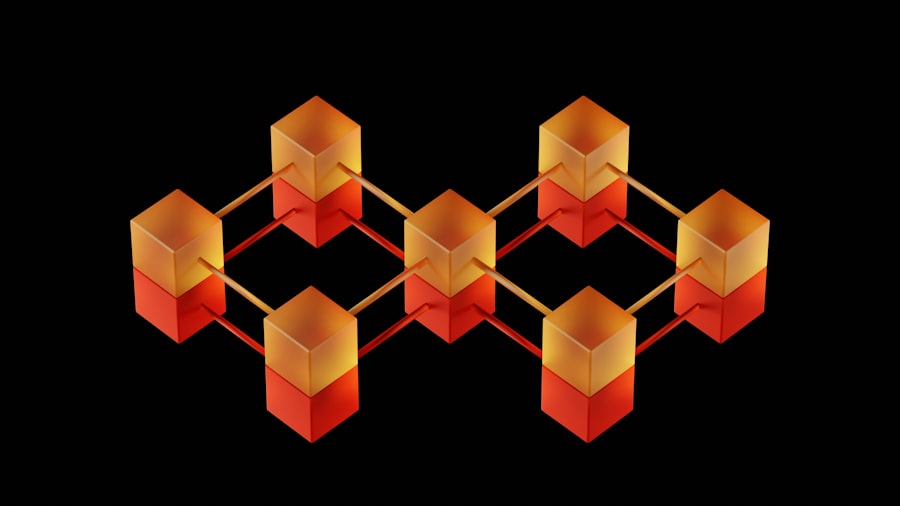Digital twins have emerged as a transformative technology across various industries in the rapidly evolving technological landscape. A digital twin is a virtual representation of a physical object or system, created using real-time data and advanced modeling techniques. This approach enables organizations to simulate, analyze, and optimize products and processes in a virtual environment before implementing changes in the real world.
The concept of digital twins originated in the aerospace and manufacturing sectors, where precise modeling and predictive analytics were crucial. As industries embrace digital transformation, digital twins have expanded into sectors such as healthcare, automotive, and smart cities, demonstrating their versatility and potential. Digital twins bridge the gap between physical and digital realms by leveraging data from sensors and IoT devices.
They provide a dynamic view of an asset’s performance, enabling organizations to make informed decisions based on real-time insights. This capability enhances operational efficiency and fosters innovation by allowing teams to experiment with different scenarios without the risks associated with physical trials. As businesses strive for agility and responsiveness in an increasingly competitive market, the adoption of digital twins is becoming a strategic imperative.
The following sections will explore the multifaceted role of digital twins in product lifecycle management, including their benefits, integration with emerging technologies, and real-world applications.
Key Takeaways
- Digital twins are virtual representations of physical products or processes that can be used for simulation, analysis, and monitoring.
- Digital twins play a crucial role in product lifecycle management by providing real-time insights, predictive maintenance, and performance optimization.
- Using digital twins in product development can lead to reduced time-to-market, improved product quality, and cost savings.
- Digital twins improve product performance and quality by enabling continuous monitoring, analysis, and optimization of product behavior and characteristics.
- Integrating digital twins with IoT and AI can enhance product lifecycle management by enabling autonomous decision-making, predictive analytics, and proactive maintenance.
The Role of Digital Twins in Product Lifecycle Management
Digital twins play a pivotal role in product lifecycle management (PLM) by providing a comprehensive framework for understanding and optimizing every stage of a product’s life—from conception and design to manufacturing, operation, and eventual retirement. By creating a digital counterpart of a physical product, organizations can monitor its performance throughout its lifecycle, gaining valuable insights that inform design improvements and operational efficiencies. This continuous feedback loop enables companies to identify potential issues early in the development process, reducing time-to-market and minimizing costly errors.
Furthermore, digital twins facilitate collaboration among cross-functional teams by providing a shared platform for data visualization and analysis, ensuring that all stakeholders are aligned in their objectives. Moreover, the integration of digital twins into PLM systems enhances decision-making capabilities by enabling predictive analytics. By analyzing historical data and real-time performance metrics, organizations can forecast future behavior and outcomes of their products under various conditions.
This foresight allows for proactive maintenance strategies, reducing downtime and extending the lifespan of assets. Additionally, digital twins can simulate different scenarios, such as changes in materials or manufacturing processes, helping teams evaluate the potential impact on product performance before making any physical alterations. As a result, digital twins not only streamline product development but also contribute to a more sustainable approach by minimizing waste and resource consumption throughout the lifecycle.
Benefits of Using Digital Twins in Product Development

The implementation of digital twins in product development offers a myriad of benefits that significantly enhance both efficiency and innovation. One of the most notable advantages is the ability to conduct virtual testing and validation. Traditional product development often involves extensive prototyping and testing phases that can be time-consuming and costly.
Digital twins eliminate much of this burden by allowing engineers to simulate various scenarios in a virtual environment. This capability not only accelerates the development process but also reduces material waste associated with physical prototypes. As a result, organizations can bring products to market faster while maintaining high standards of quality.
In addition to speeding up development timelines, digital twins foster a culture of continuous improvement within organizations. By providing real-time insights into product performance, teams can identify areas for enhancement and implement changes iteratively. This agile approach encourages experimentation and innovation, as teams can test new ideas without the fear of significant financial repercussions.
Furthermore, the data generated from digital twins can inform future product iterations, ensuring that lessons learned are integrated into subsequent designs. Ultimately, this leads to a more robust product portfolio that meets customer needs more effectively while also driving competitive advantage in the marketplace.
How Digital Twins Improve Product Performance and Quality
The impact of digital twins on product performance and quality cannot be overstated. By continuously monitoring an asset’s condition through its digital twin, organizations can gain unprecedented visibility into how products operate in real-world conditions. This level of insight enables teams to identify performance bottlenecks or anomalies that may not be apparent through traditional monitoring methods.
For instance, in manufacturing environments, digital twins can track machinery performance in real time, allowing for immediate adjustments to optimize production efficiency. This proactive approach not only enhances operational performance but also contributes to higher quality outputs by minimizing defects and inconsistencies. Moreover, digital twins facilitate a deeper understanding of customer interactions with products post-launch.
By analyzing user data collected through connected devices, companies can assess how their products are being utilized in various contexts. This information is invaluable for identifying potential areas for improvement or new features that could enhance user experience. Additionally, feedback loops established through digital twins enable organizations to respond swiftly to customer needs or market changes, ensuring that products remain relevant and competitive over time.
In essence, the integration of digital twins into product performance management creates a virtuous cycle of continuous enhancement that ultimately leads to superior quality and customer satisfaction.
Integrating Digital Twins with IoT and AI for Enhanced Product Lifecycle Management
The synergy between digital twins, the Internet of Things (IoT), and artificial intelligence (AI) is revolutionizing product lifecycle management by creating an interconnected ecosystem that enhances data-driven decision-making. IoT devices play a crucial role in feeding real-time data into digital twins, allowing for accurate monitoring of physical assets throughout their lifecycle. This constant stream of information enables organizations to maintain an up-to-date virtual representation of their products, facilitating timely interventions when issues arise.
For example, in smart manufacturing environments, IoT sensors can detect equipment malfunctions early on, triggering alerts that prompt maintenance actions before significant downtime occurs. AI further amplifies the capabilities of digital twins by enabling advanced analytics and predictive modeling. Machine learning algorithms can analyze vast amounts of data generated by IoT devices to identify patterns and trends that may not be immediately apparent to human analysts.
This predictive capability allows organizations to anticipate potential failures or performance declines before they occur, leading to more effective maintenance strategies and resource allocation. Additionally, AI-driven insights can inform design improvements by highlighting areas where products may underperform or fail to meet user expectations. The integration of these technologies creates a powerful framework for enhancing product lifecycle management, driving efficiency, innovation, and ultimately better business outcomes.
Case Studies of Successful Implementation of Digital Twins in Product Lifecycle Management

Numerous organizations have successfully harnessed the power of digital twins to transform their product lifecycle management processes. One notable example is General Electric (GE), which has implemented digital twin technology across its aviation division. By creating virtual replicas of jet engines, GE can monitor performance data in real time during flight operations.
This capability allows them to predict maintenance needs accurately and optimize engine performance based on actual usage patterns rather than relying solely on historical data or scheduled maintenance intervals. As a result, GE has significantly reduced operational costs for airlines while enhancing safety and reliability. Another compelling case study comes from Siemens, which has integrated digital twin technology into its manufacturing processes for industrial machinery.
By utilizing digital twins throughout the design and production phases, Siemens has been able to streamline operations and improve product quality dramatically. The company employs virtual simulations to test machinery designs before physical production begins, allowing for rapid iterations based on performance feedback. Additionally, Siemens uses real-time data from IoT sensors embedded in their machines to create dynamic digital twins that reflect current operating conditions.
This approach has led to increased efficiency on the factory floor and reduced time-to-market for new products.
The Future of Digital Twins in Product Development and Lifecycle Management
As industries continue to evolve in response to technological advancements and changing market demands, the future of digital twins in product development and lifecycle management appears exceptionally promising. With ongoing innovations in AI, machine learning, and IoT technologies, digital twins are expected to become even more sophisticated and integral to organizational strategies. The ability to create highly detailed virtual models that accurately reflect physical assets will enable companies to optimize their operations further while minimizing risks associated with product development and deployment.
Moreover, as sustainability becomes an increasingly critical focus for businesses worldwide, digital twins will play a vital role in promoting environmentally responsible practices throughout product lifecycles. By enabling organizations to simulate various scenarios related to resource consumption and waste generation, digital twins can help identify opportunities for reducing environmental impact while maintaining profitability. In this context, the future landscape will likely see an expansion of digital twin applications across diverse sectors—ranging from smart cities that leverage urban planning simulations to healthcare systems utilizing patient-specific models for personalized treatment plans—ultimately reshaping how products are developed and managed throughout their lifecycles.
If you’re interested in how technology is revolutionizing business processes, you might find this article on SmartSender: Your Chatbot Platform for Seamless Customer Interactions particularly enlightening. It explores how digital tools, much like digital twins in product lifecycle management, are being leveraged to enhance customer service and interaction. The article delves into the functionalities of chatbots and their impact on communication efficiency, providing a comprehensive look at the integration of advanced digital solutions in everyday business practices.
FAQs
What is a digital twin?
A digital twin is a virtual representation of a physical product, process, or system. It uses real-time data and simulation to mirror the behavior and performance of its physical counterpart.
How are digital twins used in product lifecycle management (PLM)?
Digital twins are used in PLM to improve product design, testing, and maintenance. They allow for better visualization, analysis, and prediction of a product’s performance throughout its lifecycle.
What are the benefits of using digital twins in PLM?
The benefits of using digital twins in PLM include improved product quality, reduced time to market, better decision-making, predictive maintenance, and enhanced customer satisfaction.
What industries are using digital twins for PLM?
Industries such as manufacturing, automotive, aerospace, healthcare, and energy are using digital twins for PLM to optimize their product development and maintenance processes.
How do digital twins contribute to sustainability in product lifecycle management?
Digital twins help in optimizing energy consumption, reducing waste, and improving the overall sustainability of products by enabling better monitoring and control throughout their lifecycle.

